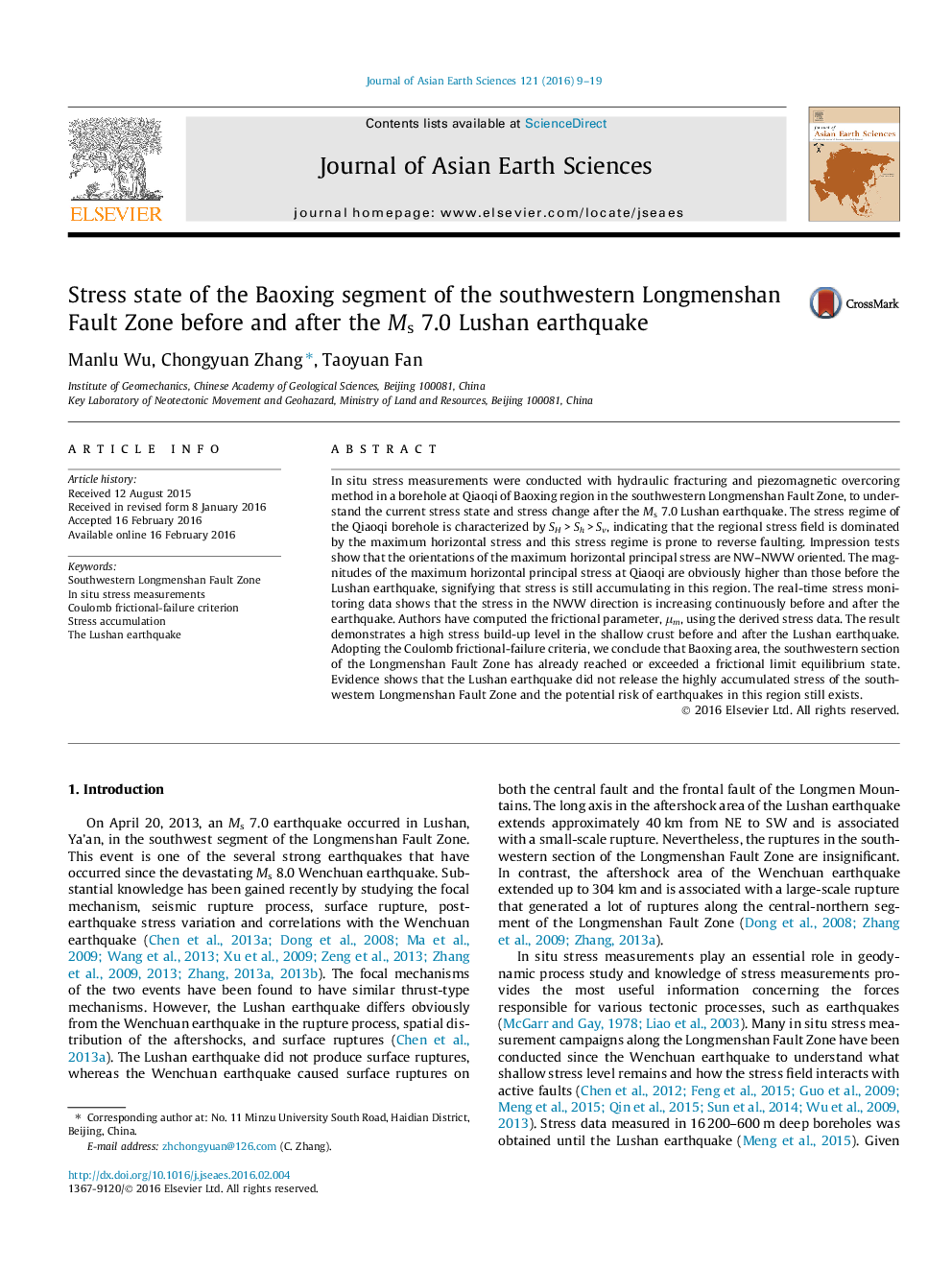| Article ID | Journal | Published Year | Pages | File Type |
|---|---|---|---|---|
| 4730067 | Journal of Asian Earth Sciences | 2016 | 11 Pages |
•We characterize in situ stress state in Baoxing region before and after the Lushan earthquake.•Stress magnitudes are greater than those prior to the Lushan earthquake.•Fault activity is discussed based on Coulomb frictional-failure criterion.•Earthquake risk seems still exist in the southwestern Longmenshan fault.
In situ stress measurements were conducted with hydraulic fracturing and piezomagnetic overcoring method in a borehole at Qiaoqi of Baoxing region in the southwestern Longmenshan Fault Zone, to understand the current stress state and stress change after the Ms 7.0 Lushan earthquake. The stress regime of the Qiaoqi borehole is characterized by SH > Sh > Sv, indicating that the regional stress field is dominated by the maximum horizontal stress and this stress regime is prone to reverse faulting. Impression tests show that the orientations of the maximum horizontal principal stress are NW–NWW oriented. The magnitudes of the maximum horizontal principal stress at Qiaoqi are obviously higher than those before the Lushan earthquake, signifying that stress is still accumulating in this region. The real-time stress monitoring data shows that the stress in the NWW direction is increasing continuously before and after the earthquake. Authors have computed the frictional parameter, μm, using the derived stress data. The result demonstrates a high stress build-up level in the shallow crust before and after the Lushan earthquake. Adopting the Coulomb frictional-failure criteria, we conclude that Baoxing area, the southwestern section of the Longmenshan Fault Zone has already reached or exceeded a frictional limit equilibrium state. Evidence shows that the Lushan earthquake did not release the highly accumulated stress of the southwestern Longmenshan Fault Zone and the potential risk of earthquakes in this region still exists.
